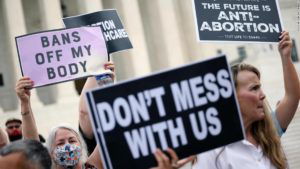
Brooks Acordia Patent Attorney Explains How to Draft Persuasive Appeal Briefs
Apr 8, 2014
Los Angeles, CA (Law Firm Newswire) April 8, 2014 – The success or failure of a patent appeal often comes down to the persuasiveness of the applicant’s written argument.
Further, appeals filed on or after January 23, 2012 are subject to recent rule changes. Los Angeles patent attorney Pejman Yedidsion explains how to draft a persuasive appeal brief that abides by the new rules.
“The argument is the most important part of an appeal brief,” Yedidsion says. “The Appellant must convince the appeal board’s judges that the Examiner committed an error in rejecting the claims and explicitly identify the error committed.”
The Appellant must make a substantive argument against the propriety of the Examiner’s stated reasons for rejecting the claims on appeal. The Appellant may either present a single argument for the patentability of all claims on appeal or present a separate argument for each claim. The board may decide the patentability of all claims in a group based upon one claim that it selects at its discretion.
Moreover, the new rules dictate that the appeal applies to all claims under rejection. If the Appellant wishes to remove any rejected claims from the appeal, they must be cancelled by amendment while the application is before the Examiner. Once the appeal is under the jurisdiction of the board, no amendments will be entered.
Yedidsion makes it a practice to argue each contested ground of rejection under a separate heading within the brief.
“Present the crux of your argument succinctly within the heading itself,” he explains. “That way, the judges are able to grasp your contention right away and examine your argument through that lens. Also, the Appellant should not necessarily argue every point with which they disagree. If one or two important issues may serve to resolve the matter, that can result in a more focused and understandable argument.”
The revised rules reinforce the Appellant’s responsibility to present all arguments in a timely manner. If an argument raised in the reply brief could have instead been presented in the opening brief, the board may elect not to consider the argument, absent a good cause for the delay.
“Writing a persuasive argument that follows the rules is enormously important in overcoming rejections,” Yedidsion states, “and for this reason, the counsel of an experienced patent prosecution attorney is indispensable for the Appellant.”
Learn more at http://www.brooksacordia.com/
Brooks Acordia IP Law, P.C.
1445 E. Los Angeles Ave. #108
Simi Valley, CA 93065-2827
Phone: (805) 579-2500
Fax: (805) 584-6427
- How the America Invents Act weakens the grace period for disclosure of inventions
It is crucial for inventors to understand what constitutes prior art in the post-America Invents Act (AIA) era. <br />
Under 35 U.S.C. 102(a)(1), public disclosures are prior art — and therefore preclude the patentability of an invention. Public disclosures include patents, descriptions in printed publications, public use, availability for sale or other availability to the public.<br />
Prior to the AIA, only domestic disclosures were considered prior art. That geographic limitation no longer exists. The phrase “otherwise available to the public” … - Google Books case illustrates the four factors of fair use
In November 2013, U.S. Circuit Judge Denny Chin hastened the end of years of legal wrangling over the legality of Google’s scanning and indexing of copyrighted works for its Google Books project. In Authors Guild, Inc. v. Google Inc., SDNY, No. 05 Civ. 8136 (DC), Judge Chin ruled that Google’s work amounted to “fair use” of the books.<br />
“Fair use” is an exception to a copyright holder’s exclusive right to the use of a protected work. The United States Code … - Speedy Patent Prosecution, Part Four: Patent Prosecution Highway
The Patent Prosecution Highway (PPH) is a program applicable to inventors filing applications for a single invention in multiple nations or jurisdictions. When one or more claims on one such application have been ruled patentable by one participating nation’s patent office, the corresponding claims on applications filed with another participating nation’s office may be fast-tracked.<br />
For example, an applicant may seek a patent on his invention in both the United States and Canada. If the Canadian Intellectual Property Office allows …



